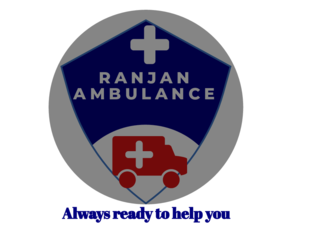Ambulance Service in Motihari: Ensuring Timely and Critical Healthcare
Motihari, a bustling city in Bihar, India, is home to a growing population with diverse healthcare needs. In this vibrant community, access to emergency medical services, particularly ambulance services, plays a crucial role in saving lives and ensuring timely medical intervention. This article explores the landscape of ambulance services in Motihari, highlighting their significance, challenges, and the efforts underway to enhance their effectiveness.
Importance of Ambulance Services
Ambulance services are often the first point of contact during medical emergencies. In Motihari, a city where healthcare infrastructure is evolving, ambulances serve as lifelines, bridging the gap between patients and hospitals. Prompt transportation in emergencies such as accidents, heart attacks, or maternal complications can significantly improve outcomes, reducing morbidity and mortality rates.
Current Ambulance Infrastructure
Motihari boasts a network of ambulance services managed by both government and private entities. The Government of Bihar, through initiatives like the National Ambulance Service (NAS), has endeavored to strengthen emergency response capabilities. These ambulances are equipped with basic life support (BLS) and often staffed with trained paramedics to provide essential pre-hospital care en route to hospitals.
Private ambulance services complement government efforts, offering a range of facilities from basic to advanced life support (ALS). These services cater to a variety of medical needs, ensuring that patients receive appropriate care during transit. The collaboration between public and private sectors enhances the overall accessibility and responsiveness of emergency medical services in Motihari.
Challenges Faced
Despite progress, ambulance services in Motihari encounter several challenges. Infrastructure and Accessibility: Limited road infrastructure in rural areas can delay ambulance arrival times, impacting critical patients. Resource Allocation: Adequate funding and resource allocation are crucial to maintain and expand ambulance fleets and upgrade medical equipment. Awareness and Education: Public awareness about ambulance services and emergency response protocols needs improvement to ensure timely utilization during emergencies.
Initiatives and Innovations
Efforts are underway to address these challenges and enhance ambulance services in Motihari. Technology Integration: GPS tracking and mobile apps facilitate quicker dispatch and navigation, optimizing response times. Community Engagement: Health awareness programs and first aid training empower communities to respond effectively in emergencies, potentially saving lives before ambulances arrive.
Case Studies and Success Stories
Highlighting specific instances where ambulance services made a difference underscores their impact. Swift Response: Instances where ambulances reached accident sites promptly, providing timely medical care and transporting patients safely to hospitals. Critical Care: Examples of advanced life support ambulances effectively managing critical cases during transit, demonstrating the importance of skilled paramedics and well-equipped vehicles.
Future Outlook
Looking ahead, the future of ambulance services in Motihari is promising with ongoing initiatives and anticipated improvements. Expansion and Accessibility: Plans to expand ambulance coverage to underserved areas and improve response times through strategic deployment. Technology Advancements: Continued integration of AI and telemedicine in ambulance services to enhance diagnosis and treatment en route. Collaborative Efforts: Strengthening partnerships between healthcare providers, government agencies, and NGOs to streamline emergency response systems and optimize resource utilization.
Conclusion
Ambulance services in Motihari are indispensable in providing timely and critical healthcare to its residents. While challenges exist, concerted efforts by stakeholders are paving the way for improved emergency medical response. Through infrastructure development, technological integration, and community engagement, Motihari is poised to enhance its ambulance services, ensuring that every individual receives prompt and efficient medical care during emergencies. As the city continues to grow, so too will its ability to meet the healthcare needs of its populace through robust and responsive ambulance services.
In summary, ambulance services in Motihari are not just vehicles; they are lifelines, embodying the city’s commitment to healthcare accessibility and emergency preparedness.

